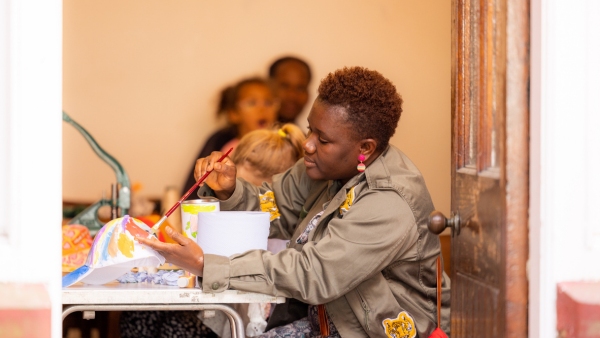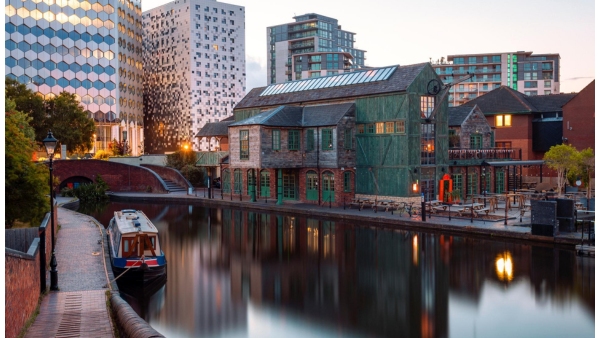I chaired a fascinating conference yesterday. At the risk of being overly critical, the conference was slightly guilty of two often repeated failings of such gathering. There was an awful lot of content, with fourteen plenary speakers across a long day facing an, inevitably, diminishing audience. And because of the wide ranging nature of the speakers, from a very senior DCMS civil servant and National Portrait Gallery administrator to the brilliant young photographer Sara Shamsavari and Araceli Camargo founder of The Cube (who offered a beguiling vision of collaborative spaces flooded with oxytocin!), sessions occasionally felt unfocussed.
Having said that, the audience seemed to enjoy the day, and with so much varied content there were bound to be some ideas worth remembering. It was in the final session that I felt I had my own particular moment of insight.
As part of his speech, cultural commentator Ekow Eshun suggested that in developing collaborations – particularly with the private sector - cultural organisations too often underestimate the power of their networks, of their brand and the quality of their relationship with audience and the public.
This got me thinking about what it is in a relationship with an institution which we most value.
Imagine a two by two matrix. On one axis lies the degree to which we feel we have some combination of choice and control, on the other the degree to which we feel we have some mix of entitlements or rights. Then think about what lies in the four zones.
In the bottom left are institutions with which we engage without much sense of choice or of entitlement. This might, for example, be a how young offender feels about being in a detention centre.
In the bottom right hand square are institutions in relation to which we feel we have some rights or entitlements in terms of access or status but over which we have limited choice or control. This – despite the rhetoric of public services choice - is the feeling most people have most of the time towards mainstream public services.
In the top left hand square are institutions which offer us a feeling of choice or control but limited rights and entitlements. In essence, this is where consumer capitalism lies. We can choose whether to go to a shop and what to buy but beyond purchasing power we have neither entitlements nor rights beyond basic statutory safeguards.
The top right hand square offers both feelings of choice/control and rights/entitlements. And this is where publicly funded cultural institutions are able to reside. We can choose which galleries to visit, which BBC programmes to watch, which public art displays to visit, but as licence payers or tax payers we also feel we are visiting or consuming as a right and that we should have some say over the policies of the institution.
This is why the public and media complain noisily when they don't agree with the choices a publicly subsidised gallery makes (see for example the furore over the Hirst exhibition at Tate Modern) or dislike a programming decision made by BBC chiefs. If private galleries or TV channels make equally unpopular choices, lacking the same sense of affront or agency, we simply don’t visit or turn off.
The matrix provokes some other observations. Much recent public service reform can be seen as an attempt to push services up from the bottom to the top of the square. The idea of free schools, for example, is that parents feel towards them much stronger choice/control than towards conventional schools. Conversely, commercial brands have long sought to cultivate the sense of collective ownership; this is what is meant by selling a relationship not a product. Apple stores are a good example of spaces which imply that access to, and status within, is based on something more than impersonal purchasing power.
Also, conflict emerges when the owners and managers have different views to users and public about where ‘their’ institution sits in the matrix. The most acute example may be football clubs. Many fans feel they are stakeholders with rights and entitlements whereas modern owners tend to see the public as mere consumers (whose blind loyalty is simply a bonus).
All this goes to reinforce Ekow’s point about the particular quality of relationships between state subsidised cultural institutions and the public.
My ‘insight’ may be nothing more than a restatement of aspects of the theory of public value. But I’ll leave that judgement to readers. After all, folks, I want you to feel this blog really belongs to you.
Related articles
-
Open RSA knowledge standards
Alessandra Tombazzi Tom Kenyon
After investigating ‘knowledge commons’, we're introducing our open RSA standards and what they mean for our practice, products and processes.
-
RSA Catalyst Awards 2023: winners announced
Alexandra Brown
Learn about the 11 exciting innovation projects receiving RSA Catalyst funding in our 2023 awards.
-
Investment for inclusive and sustainable growth in cities
Anna Valero
Anna Valero highlights a decisive decade for addressing the UK’s longstanding productivity problems, large and persistent inequalities across and within regions, and delivering on net zero commitments.




Be the first to write a comment
Comments
Please login to post a comment or reply
Don't have an account? Click here to register.